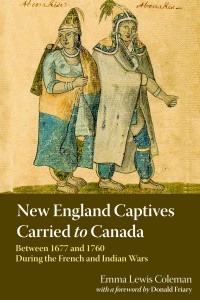 At first glance, the titles that comprise our Experts’ Choice series of books might seem a little randomly selected. We’ve got everything from collections of information on the earliest settlers of New England – Pioneers of Massachusetts, Pioneers of Maine and New Hampshire, and The First Puritan Settlers of Connecticut – to a guide book on the location and condition of Massachusetts public records in the nineteenth century, to an accounting of soldiers and officers who fought in King Philip’s War. All are tied by a common thread, however: these books are ones that NEHGS staff turn to over and over again when helping our members with their research. Continue reading The Experts’ Choice series
At first glance, the titles that comprise our Experts’ Choice series of books might seem a little randomly selected. We’ve got everything from collections of information on the earliest settlers of New England – Pioneers of Massachusetts, Pioneers of Maine and New Hampshire, and The First Puritan Settlers of Connecticut – to a guide book on the location and condition of Massachusetts public records in the nineteenth century, to an accounting of soldiers and officers who fought in King Philip’s War. All are tied by a common thread, however: these books are ones that NEHGS staff turn to over and over again when helping our members with their research. Continue reading The Experts’ Choice series
Tag Archives: Brick Walls
The Stratton Files
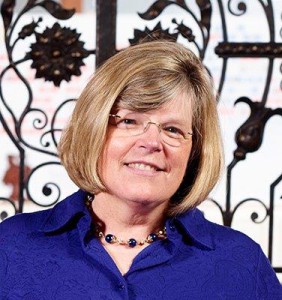 [Editor’s Note: Penny Stratton is one of the most prolific and popular bloggers at Vita Brevis. The following are some excerpts from her posts between January 2014 and February 2015.]
[Editor’s Note: Penny Stratton is one of the most prolific and popular bloggers at Vita Brevis. The following are some excerpts from her posts between January 2014 and February 2015.]
From Capturing the Recent Past: As I revise the new NEHGS Guide to Genealogical Writing (2014), I’ve been thinking ahead to a future project of my own: writing my family’s history. Having edited and produced a number of compiled genealogies at NEHGS, I have the genealogical format down cold. That’s the easy part. But what will I include for narrative information, to help bring the stories to life? Continue reading The Stratton Files
In search of family photos: Part Two
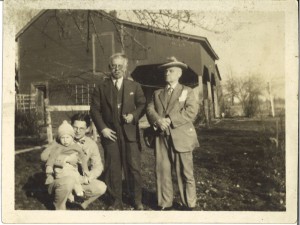
As a personal challenge, after seeing a few genealogist friends on Facebook post ancestor charts with photographs of their ancestors back to (in many cases) their great-great-grandparents, I decided to see how “complete” my collection of ancestral photos was.
Turning my attention to photos of my paternal grandmother’s family, I contacted several cousins and arranged to meet my second cousin in Pennsylvania. He also had several photos which he allowed me to take back to Boston. Unfortunately, most of these were not identified. We were able to identify our great-great-grandfather, Herbert Heath Helman, as he posed in a picture with this cousin’s father as a baby in the late 1920s. Continue reading In search of family photos: Part Two
New voices at Vita Brevis

A number of new bloggers made their début on Vita Brevis during the first half of 2015. Tricia Labbe, of the Society’s Membership Services team, wrote in February about breaking through a brick wall on her father’s mother’s family, the Dionnes:
“When I began working at NEHGS in 2014, I realized that staff experts might help me uncover questions relating to my Dionne family line. Continue reading New voices at Vita Brevis
In search of family photos: Part One
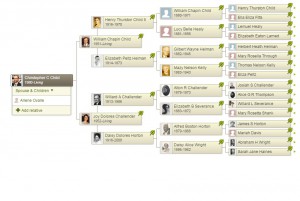
As a personal challenge, after seeing a few genealogist friends on Facebook post ancestor charts with photographs of their ancestors back to (in many cases) their great-great-grandparents, I decided to see how “complete” my collection of ancestral photos was. I have quite a few photos myself and have scanned many that other relatives have had over the years. This has often been a result of contacting second or third cousins, usually with around a 5-10% success rate when a relative actually turns out to have photographs of our common ancestors. Continue reading In search of family photos: Part One
International research posts at Vita Brevis
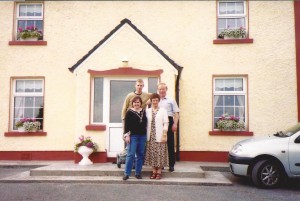
Every so often it seems worthwhile to look back over the wide range of Vita Brevis posts and bring some related ones together in one spot. Now that we are half way through the calendar year, some posts on international genealogical research merit a second look. In January, Eileen Pironti wrote about “Reconnecting with family”: in her case, her Irish family in County Roscommon: Continue reading International research posts at Vita Brevis
Marking the 4th of July
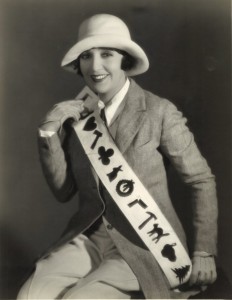
In my last post on photographs, I wrote about three unknown subjects who sat for some of the leading Hollywood photographers of the day, and readers weighed in with suggestions about who these men might be as well as where to look for answers as to their identity. In today’s post, I wanted to try something a little different, especially as I could use a photo I’ve been longing to show off: these two photos, again taken by well-known photographers of the early sound era, show three film stars doing a bit of modeling for their studios. Continue reading Marking the 4th of July
Introducing The Great Migration Directory
 The Great Migration Directory attempts to include all those who immigrated to New England during the Great Migration, and only those immigrants. After much examination of the historical record, and particularly of the activities of the passenger vessels each spring, I determined that the Great Migration ended during 1640,1 and so this volume is designed to include every head of household or unattached individual who arrived between 1620 and 1640.
The Great Migration Directory attempts to include all those who immigrated to New England during the Great Migration, and only those immigrants. After much examination of the historical record, and particularly of the activities of the passenger vessels each spring, I determined that the Great Migration ended during 1640,1 and so this volume is designed to include every head of household or unattached individual who arrived between 1620 and 1640.
This basic conclusion must be tempered by two other considerations, which have always guided the Great Migration Study Project. Continue reading Introducing The Great Migration Directory
More object lessons

Back in October I wrote about a mysterious photo in my collection of Hollywood photographs, one taken by Eugene Robert Richee of a plainly-dressed woman wearing a rather splendid hat. Photographer and studio names are given on the back, but the sitter is not identified; that post garnered a number of suggested identifications for the subject, including Olivia de Havilland, Ann Sheridan, and Barbara Stanwyck.
Since then, I have bought a number of photographs of “Old Hollywood” sitters, sometimes with the idea of having the photographer (where identified) represented in the collection; in those cases I haven’t worried much about the photos’ subjects. In thinking about these images recently, I thought they might serve as a test case on what old portrait photographs can tell us about their subjects’ identities, starting with the date the image was made. Continue reading More object lessons
More accessible (and legible) probate records
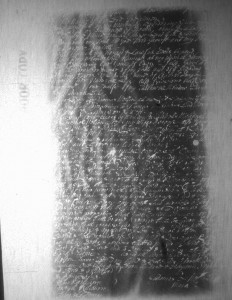
As the majority of the probate record research I do is at NEHGS and on microfilm, I’ve gotten used to what is often a multi-step process in viewing the records. This varies state by state and county by county, but some relatively recent digitization efforts have made access to some of the records significantly easier.
The county I will discuss in this post is Essex County, Massachusetts. For this case, my usual process for accessing records involved checking a book index first, which would provide the name, year, town of residence, and docket number. Then I would check the microfilm index to dockets, and see an outline of the given docket with the various volumes and pages on which the probate record was transcribed. Then I would get each particular probate record volume to examine each record. Continue reading More accessible (and legible) probate records